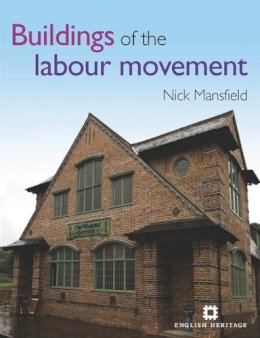Nick Mansfield is Senior Research Fellow in History at the University of Central Lancashire, Preston.
'Well-written and beautifully illustrated' The Morning Star ... little has so far been written directly about the subject, and for this reason alone this book is very welcome. Cynthia Brown, Family & Community History Buildings of the Labour Movement has a plethora of excellent photos, and some equally interesting written snapshots to support them. ... One thing is certain; this book provides both a visual treat and some equally important historical nuggets. Its insights are informative and form an important addition to the history of the Labour Movement. Dave Putson, Problems of NATO ... a much needed and very welcome addition to the literature of the labour movement. Whilst the book is essential for its wonderful and evocative collection of photographs, it is much more than a picture book ... ... This book is a delight to browse through as well as to read, and Mansfield is to be congratulated in writing it and English Heritage for publishing such an important text. Eddie Cass, Manchester Region History Review Nick Mansfield's book is a welcome and important development in the study of the built environment used by the people of the labour and radical movements. With the publication of this significant volume it is hoped a neglected area of research and publication will receive much wider attention. Highly recommended. Bob Hayes, North West Labour History Journal Yet, thankfully, Mansfield's new book captures the remarkable history of those lost buildings and, in so doing, opens up a series of characteristically learned and sympathetic insights into the history of socialism. As the former director of The Peoples' History Museum and one of Britain's finest social historians, Mansfield is a superb guide to this otherwise abandoned field of architectural and labour history. Tristram Hunt, Transactions of the Ancient Monuments Society 'This book is not just about bricks and mortar, it helps the reader follow the underlying ideology, and details of some of the relevant individuals and events are included. The text is supported by excellent colour photos of the buildings, characters and banners relating to the cause and chapters are divided into seperate smaller movements, which roughly make a chronological succession [...] There is much to like in this book; I know it's a tome I'll refer to again and again.' Lynne Pardoe, The SPAB Magazine (Society for the Protection of Ancient Buildings)
The SPAB Magazine (Society for the Protection of Ancient Buildings)

